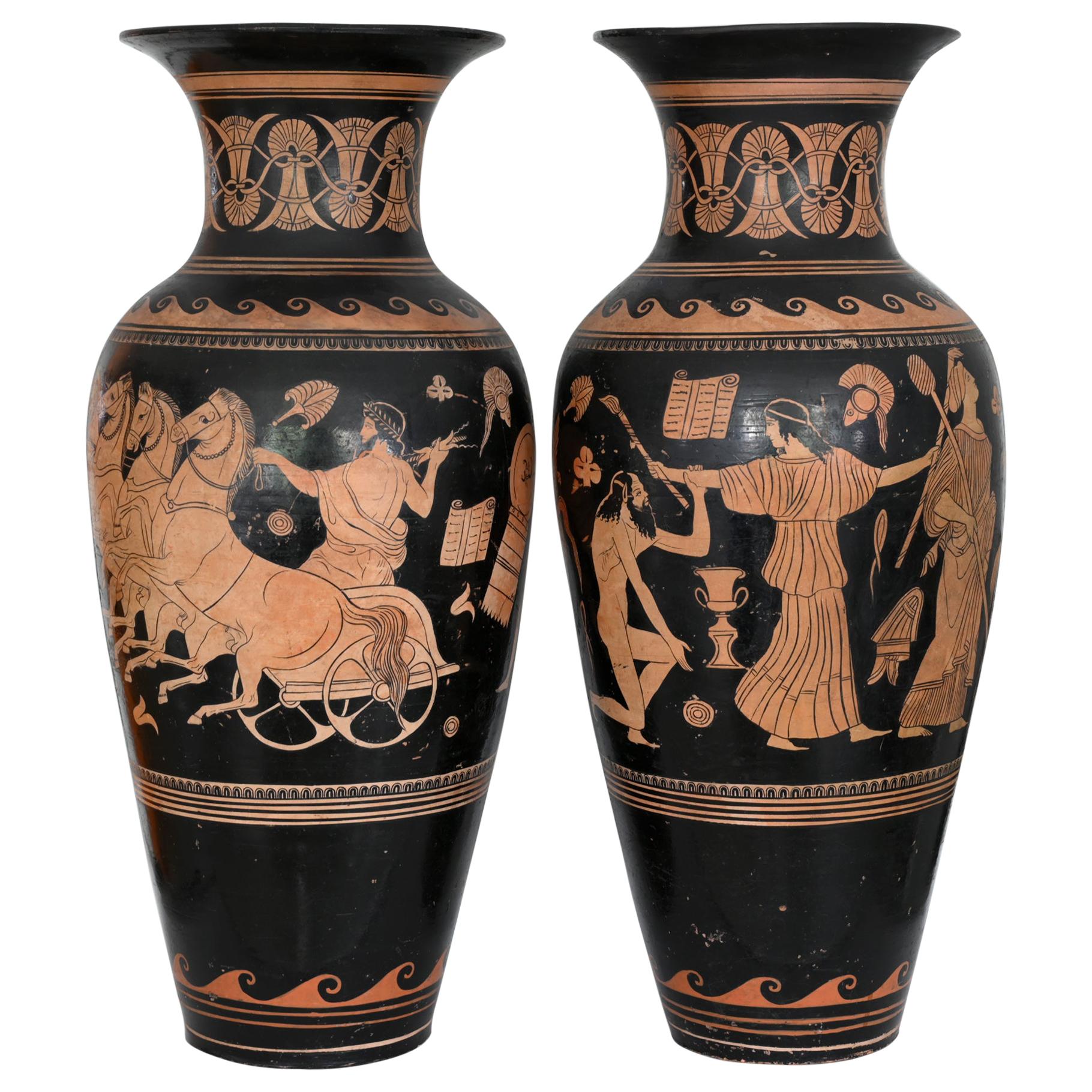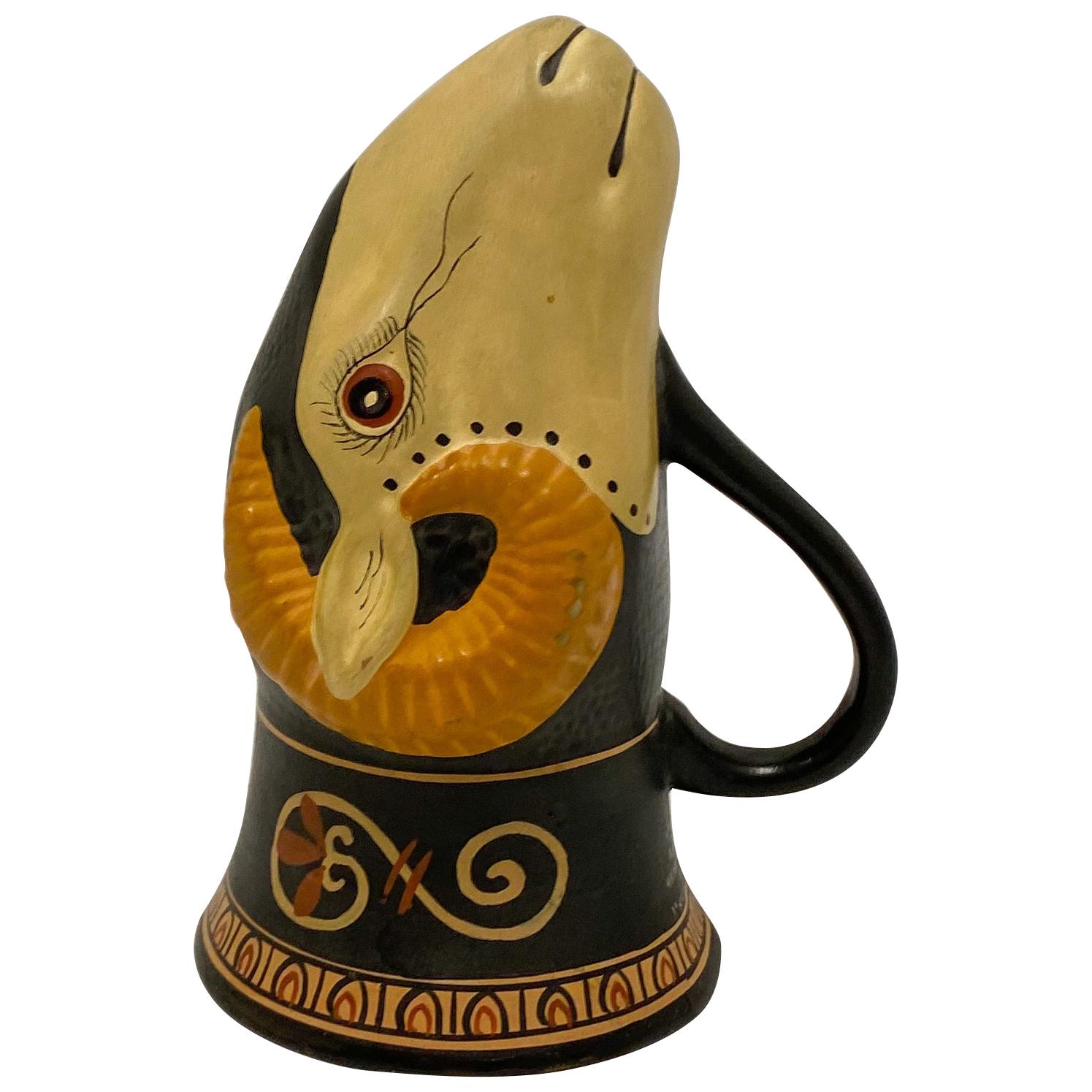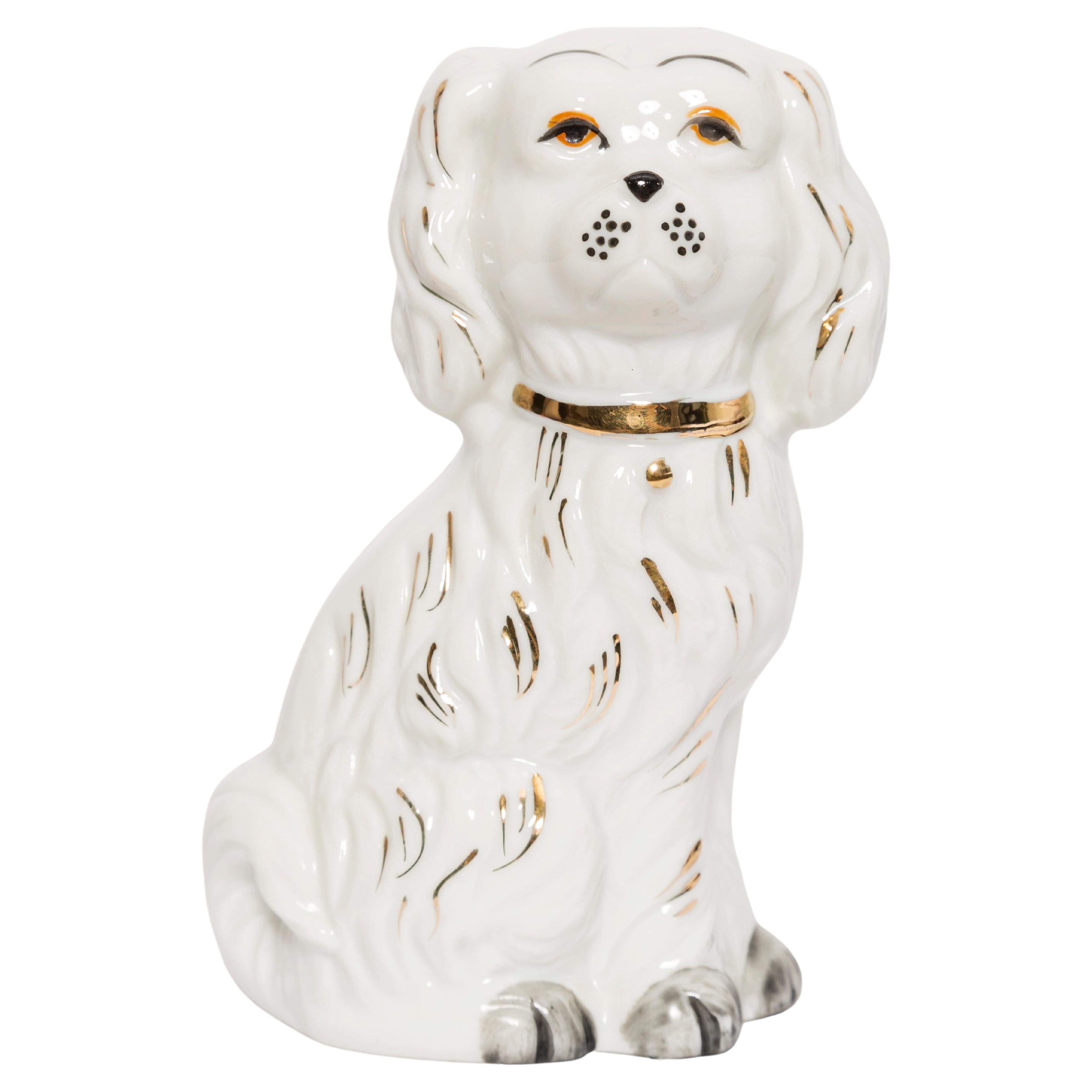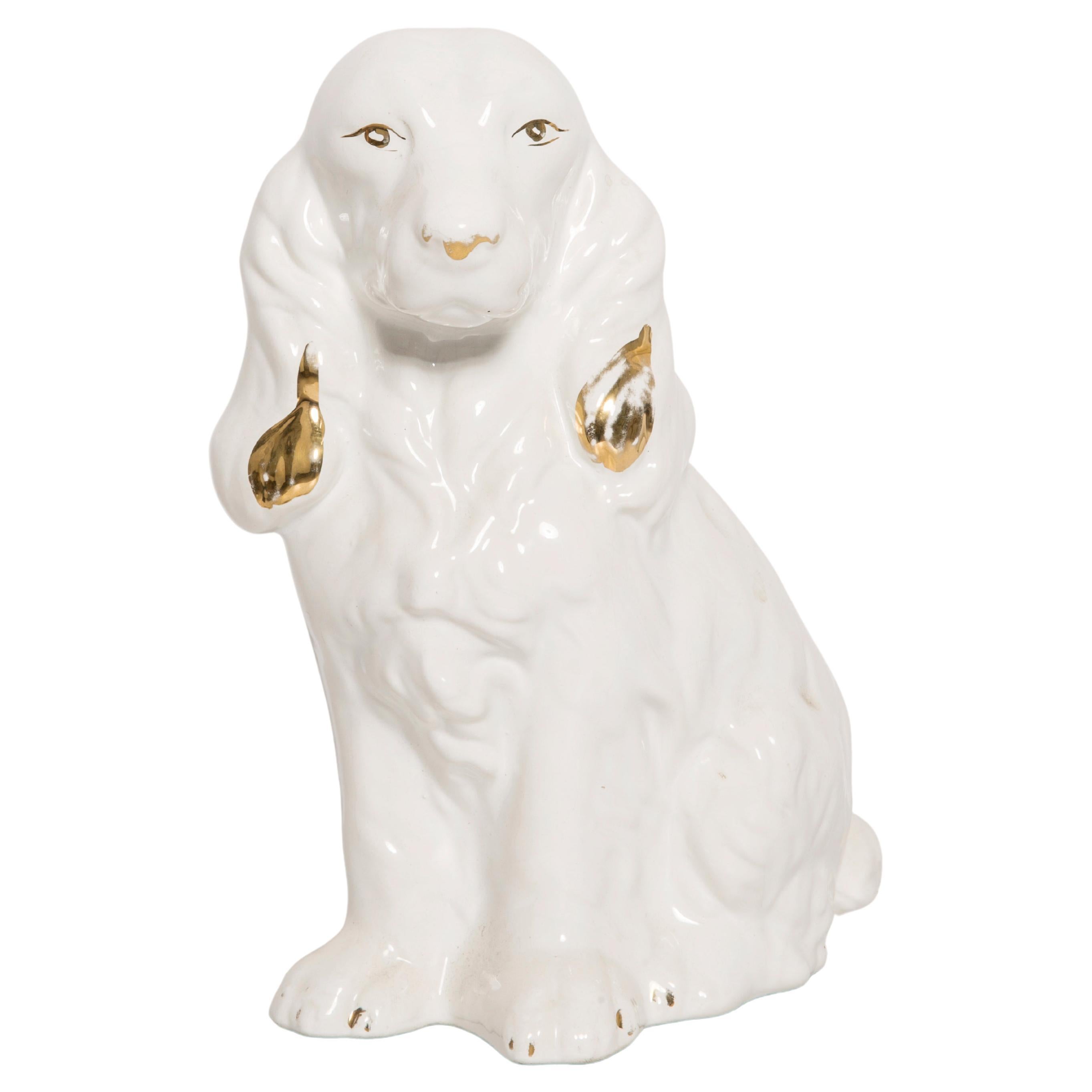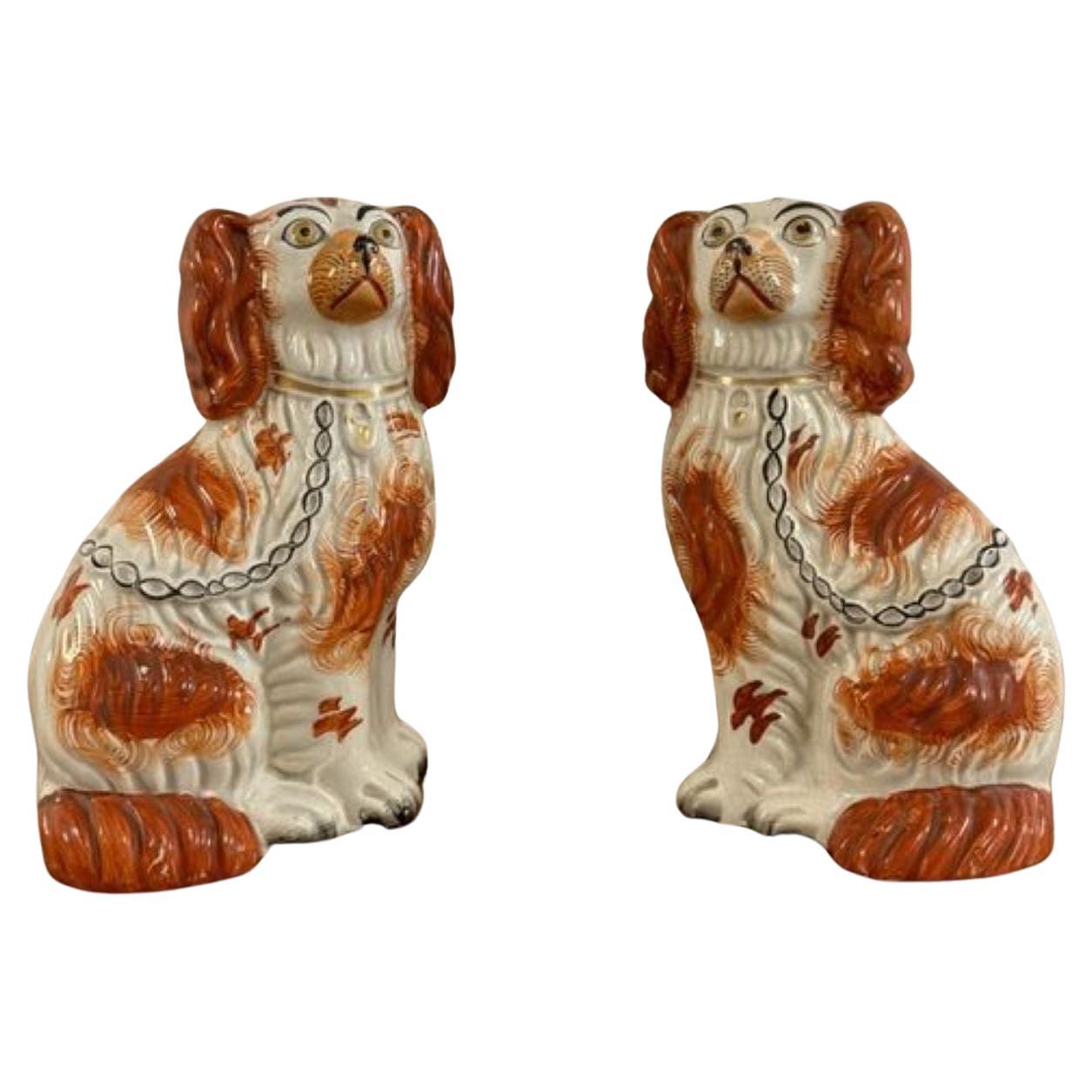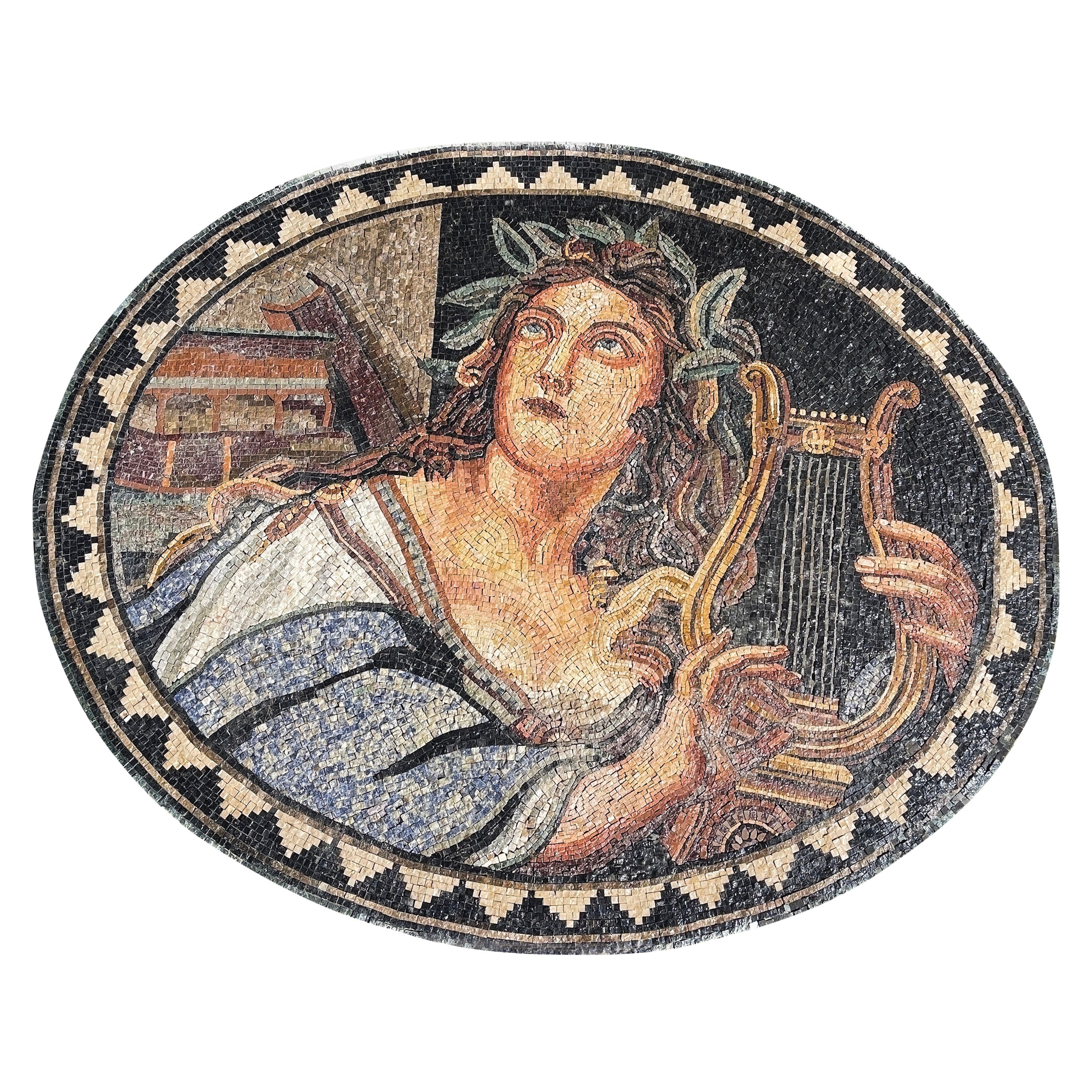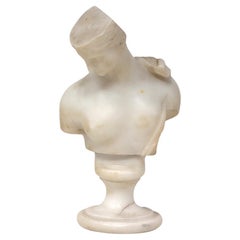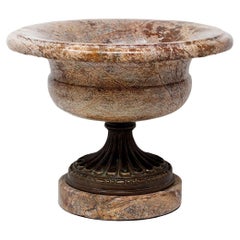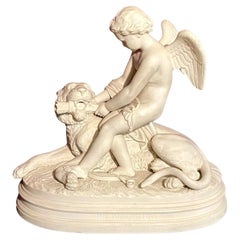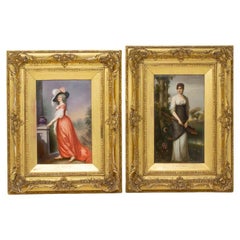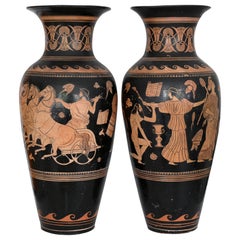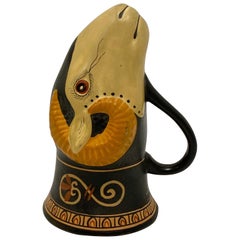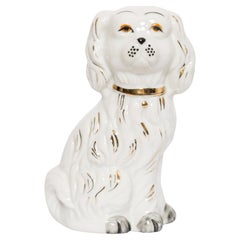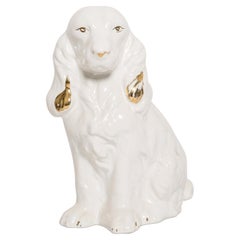Items Similar to Italian Grand Tour Micro Mosaic Spaniel After the Hunt
Want more images or videos?
Request additional images or videos from the seller
1 of 9
Italian Grand Tour Micro Mosaic Spaniel After the Hunt
About the Item
Mounted in an Oval Ebonised Frame
From our collectables we are delighted to offer this Italian Grand Tour Micro Mosaic Spaniel ‘After the Hunt’ after Antonio Aguatti and Gioacchino Barberi. The Micro Mosaic carved in Lapis Lazuli with a central inlaid oval scene featuring a recumbent spaniel dog resting after catching a bird. The Dog lays within a field with foliage and trees surrounding it. Depictions of dogs in micromosaic were very popular as par of romantic genre, being symbolic of faithful love. Antonio Aguatti developed the theme at the beginning of the 19th century along with Gioacchino Barberi. Each tile of the Mosaic finely laid giving a nearly flawless scene with little visibility between the tiles within an ebonised frame with a domed glass centre to protect the Mosaic. The Micro Mosaic dates to the first half of the 19th century circa 1830.
Micro Mosaic is a form of mosaic that uses unusually very small mosaic pieces (tesserae) stone, tile or glass. Some times in later Italian pieces an enamel-like material, to make small figurative images was used, see Insight Micro Mosaic.
Antonio Aguatti was a celebrated mosaicist active in Piazza di Spagna, Rome, Italy. He was associated with the Vatican workshop who were renowned for their highly skilled craftsmanship and restoration even today. Aguatti’s sought-after virtuoso works were copied by other mosaicists. Aguatti became known for his high quality and highly detailed mosaics noted for a selection of dogs and other animals.
Gioacchino Barberi was born in Rome in 1783 and died in January 1857. His worked out of Piazza di Spagna 99 in Rome, Italy (see Petochi 1981, p.45). Despite the coincidence of names, he has no connection with the Cavaliere Michelangelo Barberi, who was the most famous mosaicist of the Roman School in the mid-nineteenth century. In 1867, Luigi Barberi, son of Gioacchino, also jeweller and gem engraver, is listed in Murray’s Handbook to Rome at the same address; his shop is described as ‘one of the best for the ordinary class of mosaic ornaments’. He last appears in the handbooks in 1881.
Grand Tour was a trip taken around Europe, typically undertaken by young men. The period began in the 17th century and went through to the late 18th century. Women over the age of 21 would occasionally partake, providing they were accompanied by a chaperone from their family. The Grand Tour was seen as an educational trip across Europe, usually starting in Dover, and would see young, wealthy travellers search for arts and culture. Those on The Grand Tour would often have a healthy supply of funds in order to enjoy themselves freely. Marble busts such as this one would be for sale to tourists partaking in the grand tour and for sale as a form of souvenir to educate and remember where they had visited.
Measurements (centimetres) Frame 8.7cm High x 9.8cm Wide x 2cm Deep (3.43 x 3.86 x 0.79) Micro Mosaic 2.8cm High 3.3cm Wide (1.1 x 1.3 Inches)
- Dimensions:Height: 3.43 in (8.72 cm)Width: 3.86 in (9.81 cm)Depth: 0.79 in (2.01 cm)
- Style:Grand Tour (Of the Period)
- Materials and Techniques:
- Place of Origin:
- Period:
- Date of Manufacture:Circa 1830
- Condition:Wear consistent with age and use.
- Seller Location:Newark, GB
- Reference Number:Seller: BDSDDJ1stDibs: LU6971238676452
About the Seller
5.0
Gold Seller
Premium sellers maintaining a 4.3+ rating and 24-hour response times
Established in 2019
1stDibs seller since 2022
33 sales on 1stDibs
Typical response time: <1 hour
- ShippingRetrieving quote...Shipping from: Newark, United Kingdom
- Return Policy
Authenticity Guarantee
In the unlikely event there’s an issue with an item’s authenticity, contact us within 1 year for a full refund. DetailsMoney-Back Guarantee
If your item is not as described, is damaged in transit, or does not arrive, contact us within 7 days for a full refund. Details24-Hour Cancellation
You have a 24-hour grace period in which to reconsider your purchase, with no questions asked.Vetted Professional Sellers
Our world-class sellers must adhere to strict standards for service and quality, maintaining the integrity of our listings.Price-Match Guarantee
If you find that a seller listed the same item for a lower price elsewhere, we’ll match it.Trusted Global Delivery
Our best-in-class carrier network provides specialized shipping options worldwide, including custom delivery.More From This Seller
View AllAntique Italian Grand Tour Carrara Marble Bust Psyche Of Capua
Located in Newark, England
Psyche Of Capua
Fine marble bust on pedestal after the antique. The bust sculpted as the goddess Psyche Of Capua presented as a nude female...
Category
Antique Early 19th Century Italian Grand Tour Busts
Materials
Carrara Marble
Grand Tour Marble and Bronze Tazza Urn Centrepiece
Located in Newark, England
Bronze Cast Stem
From our Decorative collection we are pleased to offer this Grand Tour Sarrancolin Marble Tazza Urn. The Grand Tour Tazza Urn of typical form composed from Sarranco...
Category
Antique Late 19th Century French Grand Tour Centerpieces
Materials
Marble, Bronze
Antique English Parian Ware Figure The Power of Love Cupid and Lion
By Minton
Located in Newark, England
FEATURING CUPID UPON A LION
From our Sculpture collection, we are delighted to offer this rare form English Parian Ware Figure. The Parian Ware fi...
Category
Antique Early 1900s English Art Nouveau Ceramics
Materials
Ceramic, Porcelain
Pair of KPM Porcelain Plaques Franz Wagner Signed Sceptre Mark 19th Century
By Königliche Porzellan-Manufaktur (KPM), KPM Porcelain, Franz Wagner, Wagner Kpm
Located in Newark, England
Featuring Two Females In Period Dress
From our Ceramics collection, we are delighted to offer two KPM Porcelain Plaques by Franz Wagner sold as a pair. The KPM Porcelain Plaques fitted within their original gilt wood frames with scrolling borders both signed to the base of the frame F. Wagner each featuring a portrait of a female, the first plaque is a portrait of Charlotte, Lady Milnes after the British 18th century painter George Romney currently held in the Frick Collection, Manhattan, New York. The second plaque features the lute player after German 19th century historical portrait painter Friedrich August von Kaulbach. The Lady Milnes plaque is visibly signed to the lower right corner “Wagner” which is partially hidden by the frame, the second frame does not have a visible signature and is possibly hidden within the frame or very faint. Each of the plaques bear original provenance to the rear and are held within their original frames stating they were purchased in 1959 at £75 for the pair and were owned in a collection in Jersey along with collection numbers. Both plaques are firmly attributed to KPM and are well known plaques by the company under Wagners hand, we have not removed the original framing to confirm the mark and therefore are attributing them only. The KPM Porcelain Plaques date to the second half of the 19th century Circa 1890.
KPM (Königliche Porzellan-Manufaktur – The Royal Porcelain Factory) in Berlin was founded in 1763 Frederick the Great (King Frederick II). Its actual origins, however, lie in three private enterprises which, under crown patronage, were trying to establish the production of “white gold” (porcelain) in Berlin from the mid-18th century onwards.The company logo is a sceptre, which is stamped (painted prior to 1837) or incised on every piece. All painted pieces produced by KPM are also signed by the painter. KPM is still producing porcelain today.
Franz Wagner was from a famous family of painters working from Starhemberggasse in Vienna, Austria in the late nineteenth century. F. Wagner became known for his exceptional quality reproductions of historic old masters on porcelain for Vienna and KPM (Königliche Porzellan-Manufaktur). There is little information regarding his career but he was a known painter for Vienna and KPM active in the late 19th century to the early 20th century.
George Romney (1734-1802) was born in Beckside, Dalton-in-Furness, Lancashire (now part of Cumbria), to John Romney a cabinet maker and Anne Simpson. Raised in a cottage named High Cocken in modern-day Barrow-in-Furness, he was sent to school at nearby Dendron until he was withdrawn at the age of 11 to apprentice under his father’s business. He proved to have a natural ability for drawing and making things from wood including violins (which he played throughout his life). From the age of 15 Romney was informally taught art by a local watchmaker called John Williamson. His official studies began in earnest in 1755, when he went to Kendal, at the age of 21, for a 4-year apprenticeship with local artist Christopher Steele, who had himself studied with distinguished French artist Carlo Vanloo. In October 1756, Romney married Mary Abbot...
Category
Antique Late 19th Century German Art Nouveau Ceramics
Materials
Porcelain, Gesso
French Sevres Château de Fontainebleau Porcelain Serving Dishes
By Manufacture Nationale de Sèvres
Located in Newark, England
Ormolu Mounted
From our Ceramics collection, we are delighted to offer a pair of French Sevres boat-shaped porcelain dishes with original ormolu mounts. The serving dishes beautifully decorated with a frieze of vibrant green undulating foliate garlands interspersed with mosaic style classical romanesque cartouches and birds. The inside decorated with gilt scrollwork embellishments with a six point start to the centre. The porcelain raised on four scrolling legs draped with garlands of fruiting vine. The porcelain bearing the Louis Philippe interlaced L's Sevres mark, the Chateau de Fontainebleau mark, incised marks for the original serves blank manufacturing along with initials and finally the painted initials WB. The dishes dated to the first half of the 19th century 1839/1840 respectively. The ormolu mounts stamped to the base CHER.
Château de Fontainebleau (also known as the Palace of Fontainebleau) is located southeast of Paris and is one of the largest French royal châteaux. The medieval castle served as a residence for the French monarchs from Louis VII...
Category
Antique Mid-19th Century French Louis Philippe Ceramics
Materials
Ormolu
Antique Vienna Porcelain Cup and Saucer
By Royal Vienna Porcelain
Located in Newark, England
Decorated with a Classical Scene
Measurements Saucer 2.7cm High x 13.4cm Diameter (1.1 x 5.3 Inches) Cup 6.5cm High x 8.5cm Long x 6.5cm Wide (2.56 x 3.35 x 2.56 Inches)
From our C...
Category
Antique Late 19th Century Austrian Belle Époque Ceramics
Materials
Ceramic, Porcelain
You May Also Like
Pair of Red-Figure Black-Ground Vases, 1810-1850, Italy, Terracotta, Grand Tour
Located in Epfach, DE
19th Century Pair of Red-Figure Black-Ground Vases, 1810-1850, Italy – Grand Tour Terracotta
This exquisite pair of Italian red-figure black-ground vases, dating from circa 1810-185...
Category
Antique Mid-19th Century Italian Grand Tour Vases
Materials
Terracotta
Italian Neo-Classical Grand Tour Style Ram’s Head Stirrup Cup
Located in Kennesaw, GA
This is an Italian neo-classical Grand Tour ram’s head form stirrup cup. The composition is pottery with an almost bisque-like finish.
Category
Mid-20th Century Italian Neoclassical Decorative Bowls
Materials
Pottery
Mid Century Small White Spaniel Dog Sculpture, Italy, 1960s
Located in 05-080 Hornowek, PL
Painted ceramic, very good original vintage condition. No damages or cracks. Beautiful and unique decorative sculpture. Small Dog Sculpture was pro...
Category
20th Century Italian Mid-Century Modern Ceramics
Materials
Ceramic
$74 Sale Price
20% Off
Rare Ceramic White Small Spaniel Dog Decorative Sculpture, Italy, 1960s
Located in 05-080 Hornowek, PL
Painted ceramic/terracotta, good original vintage condition. Beautiful and unique decorative sculpture. Spaniel dog was produced in 1960s in Italy.
Category
20th Century Italian Mid-Century Modern Ceramics
Materials
Ceramic, Terracotta
$279 Sale Price
20% Off
Stunning Roman Mosaic style, goddess playing the harp, circa 1950.
Located in Hägersten-Liljeholmen, Stockholms län
Stunning Roman Mosaic style, goddess playing the harp, circa 1950. This stunning mosaic represent a goddess playing the hard, it is hard to date but it looks like it's a mid century work...
Category
Vintage 1950s Italian Greco Roman Ceramics
Materials
Ceramic
Wonderful pair of antique Victorian seated spaniels
Located in Ipswich, GB
Wonderful pair of antique Victorian seated spaniels.
Having a lovely pair of antique seated spaniels with red and white coloured coats and matching collars, padlocks and chains.
D....
Category
Antique Early 19th Century Early Victorian Ceramics
Materials
Ceramic
Recently Viewed
View AllMore Ways To Browse
Micro Mosaic
Micro Mosaic Italian
Enamel Tile Mosaic
Arts And Crafts Silver With Enamel
Antique Micro Mosaic
18th Century Silver Inlaid
Glass Micro Mosaic
Lapis Dior
Antique Glass Bird Ornament
Silver Micro Mosaic
Micro Mosaics Grand Tour
Roman Micro Mosaic
Micro Mosaic Vatican
Dior Lapis Lazuli
Bird Micro Mosaic
Micro Mosaic Doves
Jacques Dufresne
Jacques Grange Console
